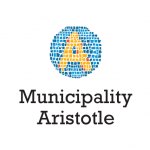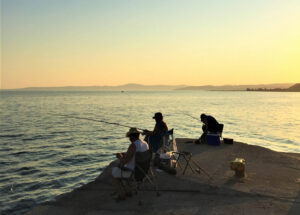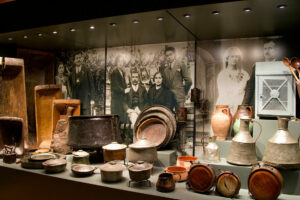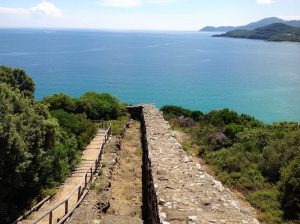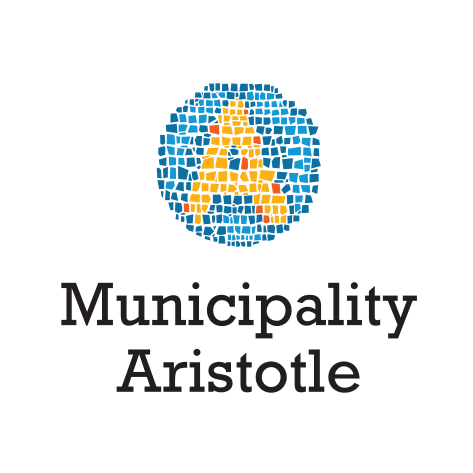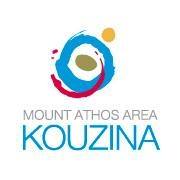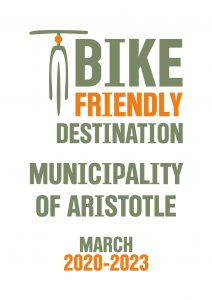Ancient Sites
It is really rare, so many ancient sites and monuments neighbouring each other, existing in an area, where the historical data compose such a rare and of high importance route.
Eastern Halkidiki presents its history through its ancient sites, the monuments and its museums:
• The Hellenistic city of Stageira
• Zigou Monastery
• Ancient Akanthos
• The Sanctuary of Ancient Ouranoupoli
• Sidirokafsia
• Castle Neposi
Visit them at every opportunity, following the existing archaeological routes, or even by creating your own!
The Hellenistic city of Stageira
It is for sure the most beautiful place that you have ever seen! Built on the verdant peninsula “Liotopi”, 500meters southeast of Olympiada, and occupies the two hills of the small peninsula.
The city was founded around 655 BC by Iones colonists of Andros Island, and little later arrived also settlers from Halkida. After the Persian wars, Stagira was a member of the Athenian Alliance, contributing this way to the common fund. During the Peloponnesian War, and concreter in 424 BC, the city was deserted by the Athenians and allied with the Spartans. The event angered the Athenians who rushed to siege the city, but without managing. Later Stagira joined the Public of Halkida. In 349 BC the city was besieged and later yielded to Macedonia’s king Philip II, who devastated it, to found it again from the beginning some years later, in order to honor Aristotle. It seems though that this destruction marked the start of the city’s decline. For this reason geographer Stravon, who lived at the time of Jesus Christ, noted that Stageira was deserted.
Learn more Municipality of Aristotle | Ancient Stagira (dimosaristoteli.gr) and Visit Ancient Stageira! Dare to wander around the archaeological paths in the verdurous nature, seeing all the findings on both hills, and- if it is summer- finish the visit with a swim at the beaches around. Indeed it is about a unique experience!
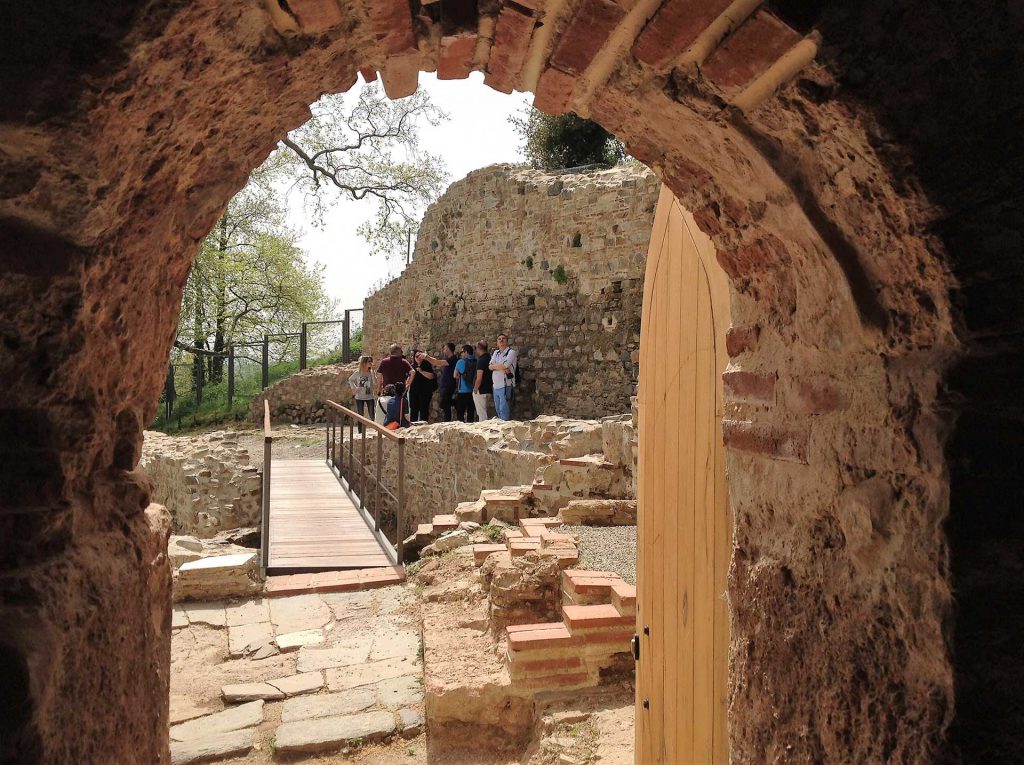
Sidirokafsia
one of the most significant ancient site in Macedonia
Zigou Monastery
It is about the excavation of the former Mount Athos, Zigou Monastery, and located 40m away from the nowadays borderline of Mount Athos known as the unique monastery which can be visited by women as well.
The first mention of “Zigou” on the Athos peninsula comes from a document of 1942. In 958, St Athanasios, the later founder of Megistis Lavras Monastery, was initially invited to Zigou, where he started his ascetic life, under the loyalty and the obedience of his Elder. In 991 seems that Zigou Monastery had been already founded, whose first testimony comes only in 996. The monastery was dedicated to Prophet Elias. Although during 11th century the monastery was one of the most important Athos monasteries, in 1199 was already deserted and given as a metochi from Emperor Alexios III Aggelos, to the re-founded then Hilandariou Monastery. Around 1206, appears to settle in the castle a Frankish ruler with his soldiers, who dashed from there and looting Mount Athos. That was until 1211, when the intervention of Pope of Rome expelled him from the region. For this reason, the ruins of the monastery are also known as “Fragkokastro”.
It is a unique example of big Athos monastery, whose structure can be studied without the barriers of later building phases and devotional use. It is noted that the walled area stretches to 5.5 acres and the walls are fortified with 11 towers. The castle consists of 5 at least building phases, all older to 1211.
The information is taken from the booklet of 10th Ephorate of Byzantine Antiquities, this will be given to us during your visit to the Monastery.
Learn more Municipality of Aristotle | Zygou monastery (dimosaristoteli.gr) and Visit Zigou Monastery! It abstains 1000m from Ouranoupoli and is the end of the mapped archaeological walk, starting from Prosforiou Tower, but the end of the mapped walk and cycling route. Women (who cannot visit Mount Athos monasteries) will understand the operation of a Holy Monastery and men will feel the need to carry out a pilgrimage visit to the unique monastic state of the world. A few meters away from the Monastery are the land borders of Mount Athos. The wall, the Arsanas of Chromitsa monastery, the lush vegetation along the calm waters of the Gulf, will convey you the devoutness of Mount Athos.
(Ticket price 2€)
For the antiquities of Ouranoupolis click here: Municipality of Aristotle | Antiquities of Ouranopolis (dimosaristoteli.gr)
Ancient Akanthos
Ancient Akanthos stretched in three hills of the Stratoniko Mountain, in an 560 acre area, approximately 600m southeast from the Ierissos settlement. The walled city of Akanthos was named after the many thorns of the region or after the thorn-formed shape of the fortification. A systematic excavation has yet to be done. Some of the travelers of the previous century report the existence of an ancient pier in the port of the city. Indeed, present evidence regarding the city start from the beach of Ierissos, where ruins of a platform of the ancient port are preserved.
The walls of the acropolis are the most important preserved ruins, since parts of 8m in height are some of them. The ruins, visible at present day, are mainly parts of the city’s fortification, ruins of walls, an impressive part of the acropolis, scattered architectural parts and structural ruins of the Hellenistic period, public buildings, houses and the foundations of a temple –probably of Goddess Athena- on top of the hill.
WALK
It is wonderful to take a walk on the three hills where Akanthos used to be. You will enjoy it especially in spring when the place is verdurous. Ascending straight from the entrance of the archaeological site, you will see the byzantine cobbled road with a house and an inside yard surrounded by rooms, on it. It was built in the later 4th century B.C. early 3rd century B.C. and was destroyed in the 2nd century B.C. As it seems from its structure, it is characterized by the total feeling of privacy.
Continuing your walk, you descend on the first hill where a byzantine church is located, probably of the 10th century, built from material of the ancient building that was destroyed by the 1932 earthquake. Potteries of the Early Iron Age have been discovered around it. Walking towards the second hill you will see on your left parts of the wall and next you descend to the third hill. There are foundations of a hekatompedon ancient temple (i.e. 100 foot or 30,48m long) on top of it, by the excavation of which few movable findings were discovered. The view is outstanding.
THE CEMETΕRY
Akanthos is not excavated fully yet, but the research for the necropolis had started in 1973. It spreads to the coastal part of Ierissos and more than 600 tombs have been currently recorded. The cemetery was used from the archaic period until the roman period and probably with some interruptions until 17th century B.C. The tombs are in two or at least three superimposed layers, usually parallel to the coastline. According to the known ancient customs, children and adults were buried in the same place. There are several types of tombs, such as simple or clay-coated, rectangular pits with clay urns or embossed or painting decorated, box shaped, tile roofed tombs.
Some burials in jars or smaller vessels are also recorded, that consist the largest percentage of the childrens’ and babies’ tombs. The funeral gifts are of a great variety. Most of them are clay vessels. Many of the funeral gifts were private property of the dead or were relevant to the profession or their occupation: among them, jewels, pins, brooches, mirrors, strigils, needles, hooks, knives etc. The existence of weapons was probably rare. Clay figurines in the form of gods, cupids, actors, humans, animals are often found in women’s and mainly children’s tombs. Similar burial customs, tombs and findings are found in cemeteries of other cities of Macedonia and Thrace. The influences, the cultural contacts and the trading with the Greek-speaking countries of the East and the island centers of the Aegean Sea with Euboea, Athens, Corinth and Boeotia are obvious. The workshops of Akanthos, where amphorae for the transportation of the famous “akanthio wine” were constructed, were situated between the ancient cemetery and the city.
HISTORICAL DATA
Ancient Akanthos was located near the so called Canal of Xerxes in the Strymonian Gulf, on the root of the Athonite peninsula, in the present gulf of Ierissos. It is stated as a colony of Andros by Stravonas (7,331) and Thucydides (4,84). According to Eusebius and to some other archaeological data, it was probably founded in 655 B.C. It is generally accepted that it was founded in the middle 7th century from Ionian colonists of Andros or of Andros and Halkida, at the same time of the founding of three other known colonies in the region: Sani (Nea Roda), Stagira and the oldest Greek colony in the area of Strymon, called Argilos, located a little more to the north. Its economy was based on its mineral and forest wealth, as well as the agricultural and stockbreeding products that were trafficked through its port.
Herodotus (6,44) states that in 490 B.C., the city surrendered to the Persians of Mardoni. In 480 B.C., during the next Persian campaign, Xerxes passed through there, and the city was forced to accommodate his huge army, a fact that probably implied the almost complete economic disaster of Akanthos. Residents were also forced to work in the opening of the Canal of Xerxes, for his fleets’ passage. After the Median wars, the city drove away the Persians and became subordinate to the winners, Athenians. Xenophon, states in his Greek (5,2,11) that in 424 B.C., Akanthos it was passed on to Spartan general Vrasidas and remained an ally to the Spartans until the end of the Peloponnesian war. In the early 4th century, it opposed Olynthos and thus of the establishment of the Olympian Confederacy.
In 348 B.C., Macedonians headed by Philip II, conquered every city of Halkidiki and retained them under their command until 200 B.C. Then, Akanthos was completely destroyed by Attalos I the Soter and his Roman allies during the war against Macedonian king Philip V. Roman. Historian Titos Livios states (31,45) that the united fleet and army of Attalos and Romans conquered and pillaged the city. In 168 B.C., after the battle of Pynda, it became a Roman ownership and the latest reports of the city are until the byzantine period. The city was famous for its wine and salt. In fact, they used to say that the crickets in ancient Akanthos were voiceless. Thus came the famous ancient Greek proverb “Akanthios tettix”, as reported by Mnason the Patrefs and Simonidis.
COINS OF THE CITY
The coins minted by the city are an important addition to its history. They are considered to be some of the oldest and most stylish Greek coins of the ancient era. Akanthos minted coins for the first time in 530 B.C. modeled on the monetary system of Euboean silver. Its four drachmas coin bears the presentation of the famous bull killer lion, a lion devouring an ox. There is an incuse square divided into four similar squares on the opposite side. In the same coin, the inscription “AKANTHION” was later added on the backside together with some symbols (acanthus flower, etc.). In other four drachmas coins, the lion devours a boar –these were probably minted in Stagira, the port of which was called Kapros.
The drachmas of Akanthos illustrate a kneeling boar, turning his head backwards. The four-obol coins also present a lion or a bull. The two-obol coins present the head of Athena. The obol coins present a head of a lion. All these coins were silver. After 424 B.C., when Akanthos joined the Spartans, it started minting silver coins modeled on the Phoenician monetary system. These too present a lion devouring a bull, whereas the opposite side has the inscription “AKANTHION” and the name of each governor. Four-drachmas, four-obol and three-obol coins have a bull in the fron side. The two-obol coins illustrate the helmet wearing Athena with the inscription “AKAN”. Those were minted until 400 B.C.
Read here for the medevial cemetary of Ierissos Municipality of Aristotle | The medieval cemetary of Ierissos (dimosaristoteli.gr)
The Sanctuary of Ancient Ouranoupoli – The ancient Sani
Between the port of Tripiti and the golden beaches of Develiki and Xeropotami are located the findings of the Temple of Ancient Ouranoupoli, which had life from the archaic to the Hellenistic era, a history associated with cities:
• Sani, and
• Ouranoupoli, which was founded in 315 BC from Alexarchos, brother of Cassandros, king of Macedonia
At the late of the 6th century, the residents of Sani built the sanctuary outside the city walls. But when Alexarchos founded Ouranoupoli, placed it inside.
The excavations brought to light important findings:
• a pile of stones, with traces of burning rituals
• marble heads of the Sun
• a marble head of a girl
• a built desk along the Temple
Your visit to the Sanctuary of Ancient Ouranoupoli is an archaeological walk in an area of natural beauty along the Gulf of Mount Athos and across the island of Ammouliani.
Learn more Municipality of Aristotle | Ancient Sani (dimosaristoteli.gr) and do not miss it, it will amaze you!
Sidirokafsia
At the north of Eastern Halkidiki, in the 9th AD century, was developed Sidirokafsia, which took its name by the mineral deposits existed at the area, and from the trading as well, which was intensified since the early years of the Ottoman Rule.
Concreter, the fortress complex of “Sidirokafsia” was built at all heights of today’s settlement of Stageira, which includes parts of the fortification- mostly towers, ruins of houses and workshops, where the mine trading was taking place.
The mines of Sidirokafsia were under the control of the Sultan and were (along with villages) the “League of Mademia”, controlled by the Assembly (Sabor).
It is about the 20 famous Mademohoria, headed by the Madem-Aga, who collected annually the contribution of the Great Gate.
Over the years the mines declined, until the revolution of 1821, when Mademohoria participated in the War of Indepedence, suffering though from heavy disasters from the Ottomans. Then the League of Mademia broke down.
Nowadays you will see all these findings into the Park of Aristotle and the hill right across. The local history will pass in front of your eyes!
Read about the Park here: Municipality of Aristotle | Aristotle’s Park (dimosaristoteli.gr)
Ticket (Aristotle Park): 2€
Neposi Castle
On the top of a fort hill, south of Paleohori, it is built a castle, the “Castelli”, the largest of Halkidiki. The only connection to the hill with the mountain is a narrow path. Circled by three sides of a pit, the main tributary of Havrias River, brings plangent sounds of the canyon, coming from a depth of 30-40 meters. Surrounded by a landscape of an outstanding natural beauty and lush vegetation, is “protected” by a wall of length from 800-1000 meters and height of 4 to 5 meters. The castle occupies an area of 15 acres.
The wall seems to have 3 building phases, which are distinguished at its height, and show how many times it had been rebuilt after disasters. Built in the 5th AD century on a location that it was inhabited at least since 1500 BC. The castle was seriously damaged, probably during the 6th century, when it was finally abandoned.
Learn more Municipality of Aristotle | Castle of Neposi (dimosaristoteli.gr) and dare an explorative tour at the Neposi Castle.
You will feel the magic of a real archaeological wandering!
